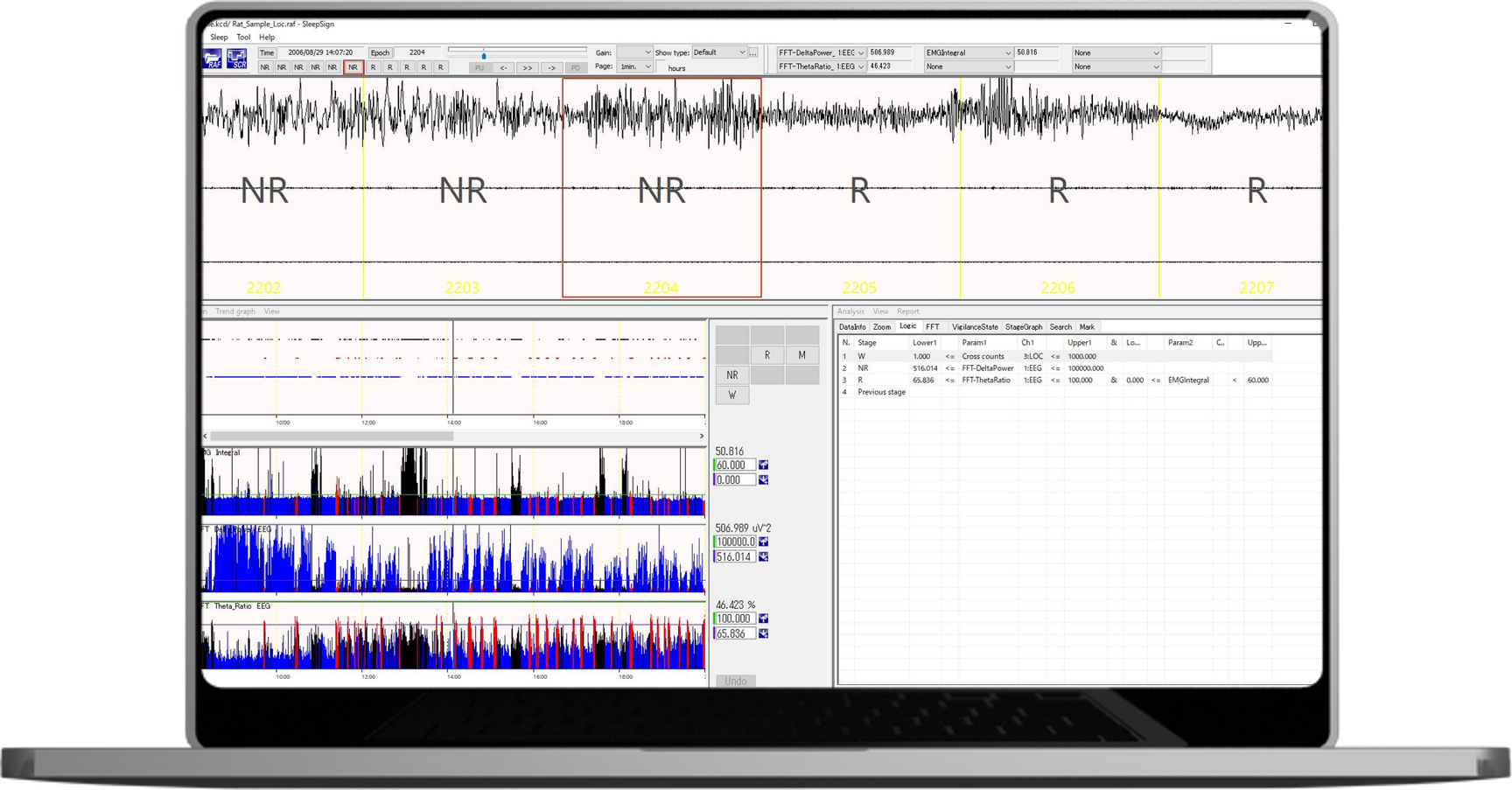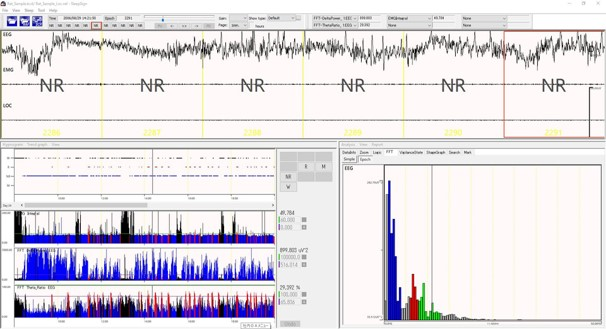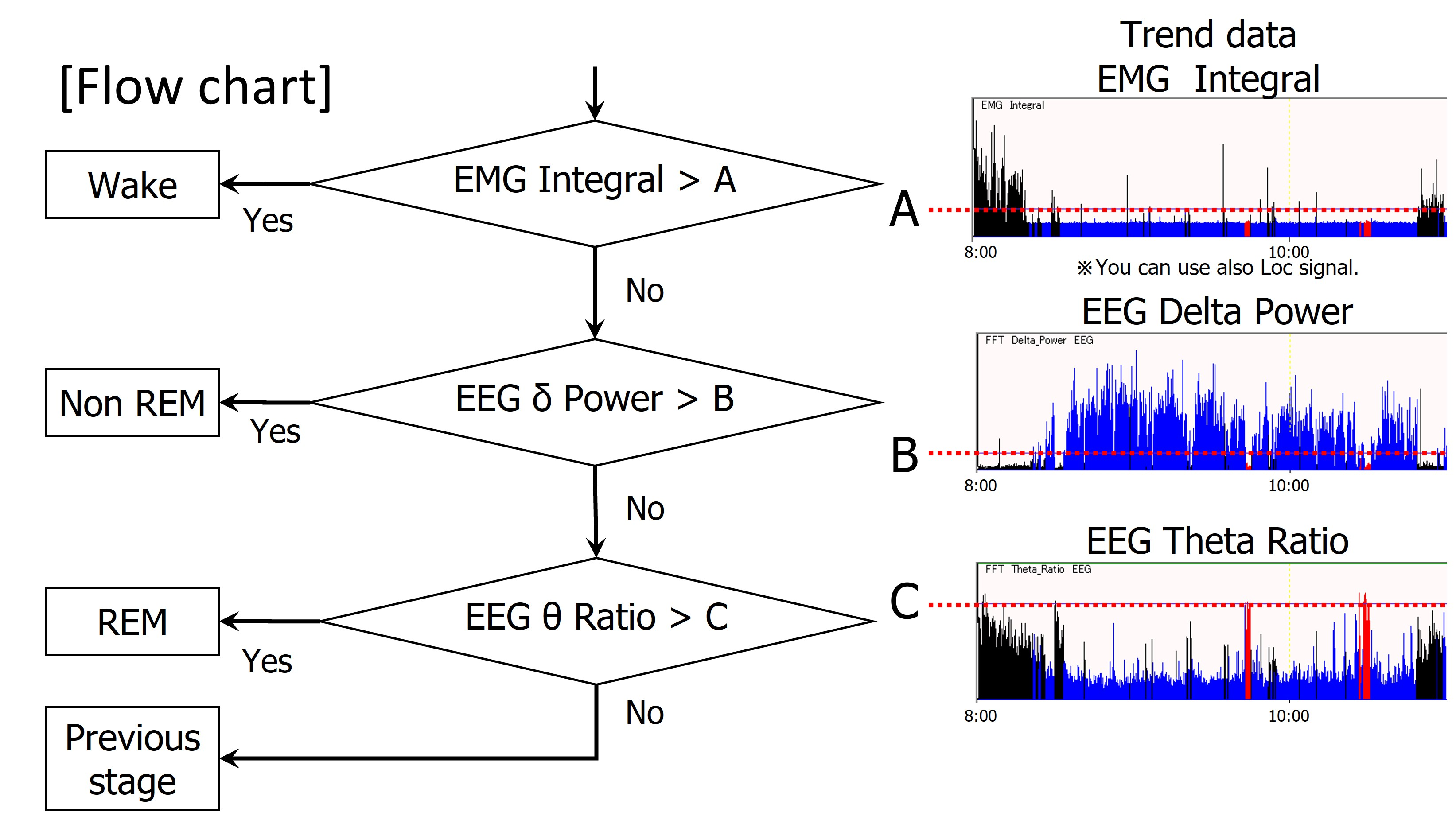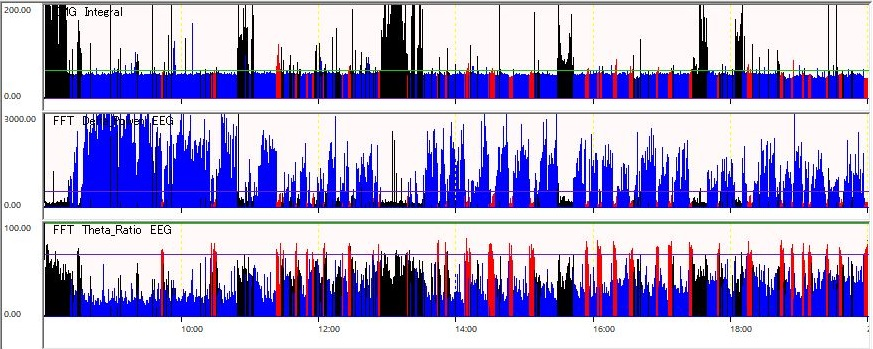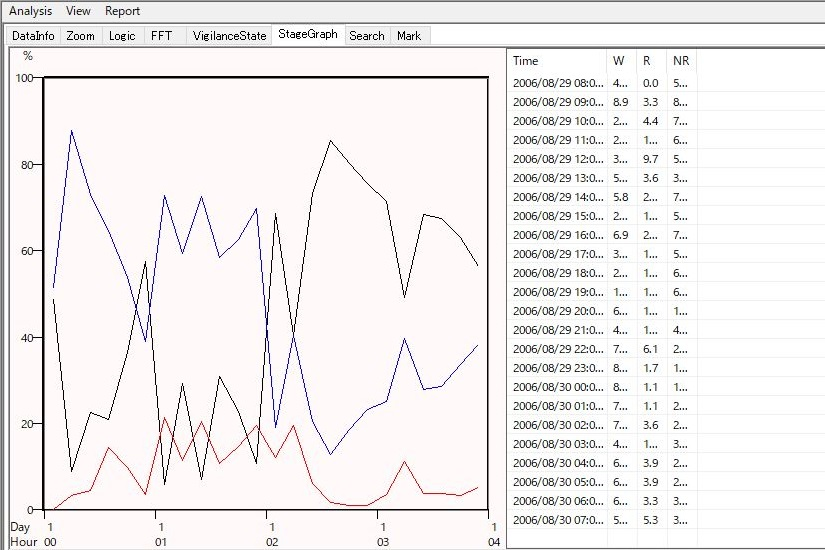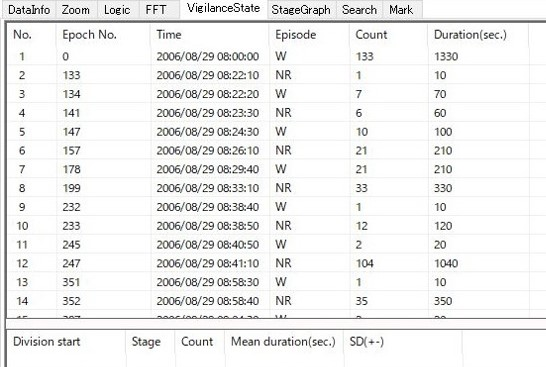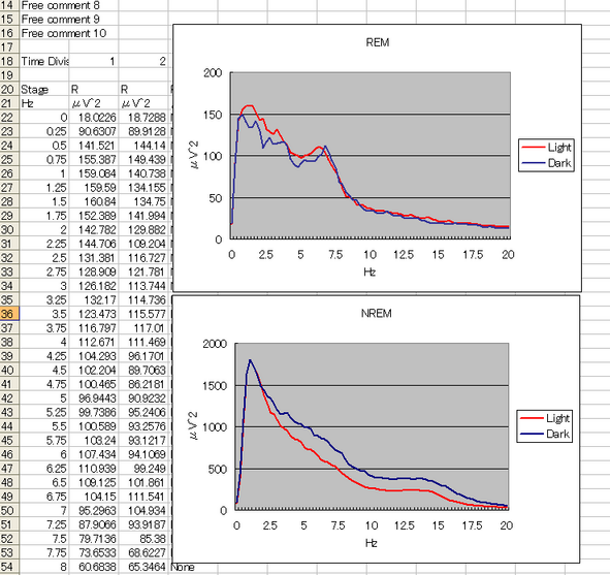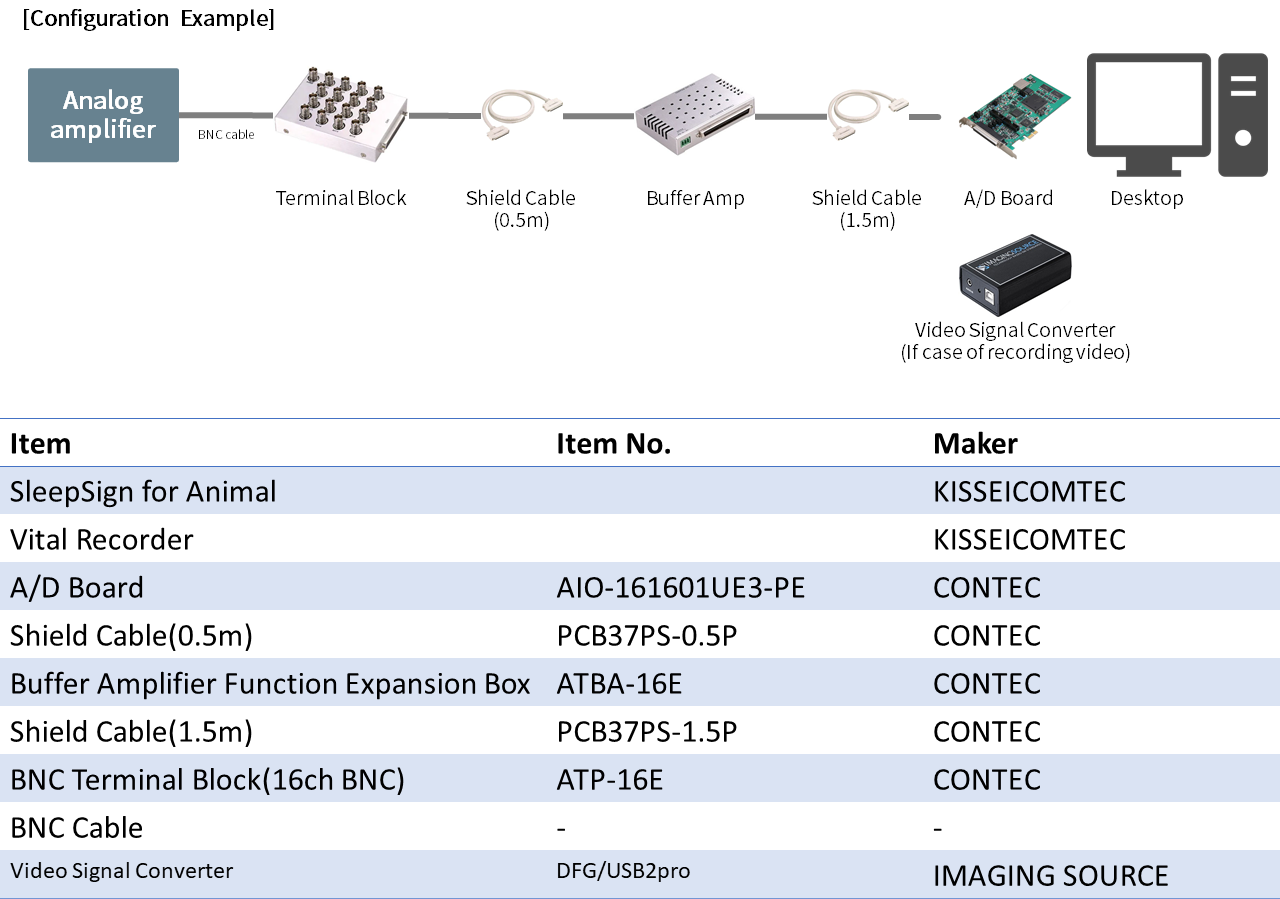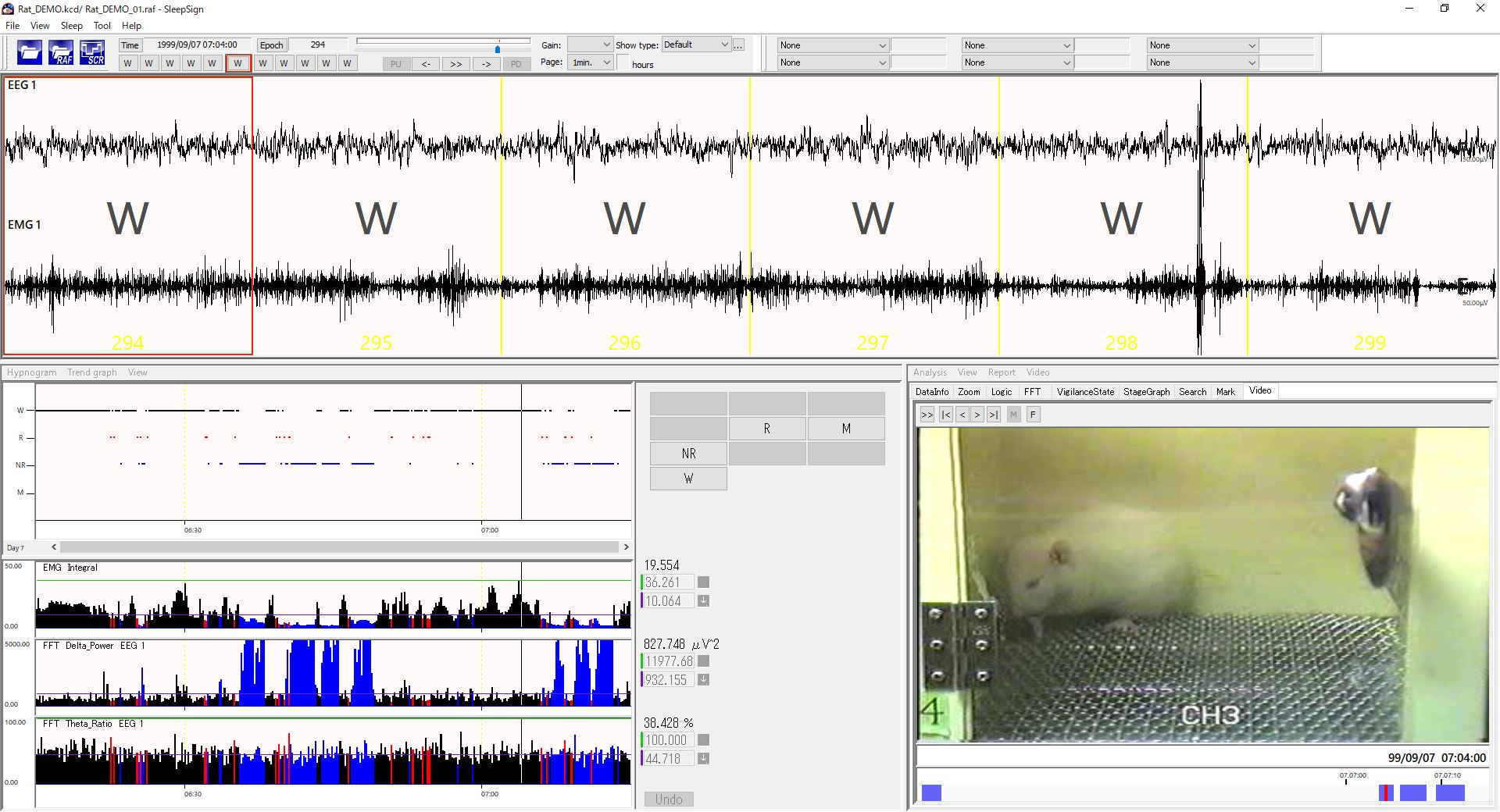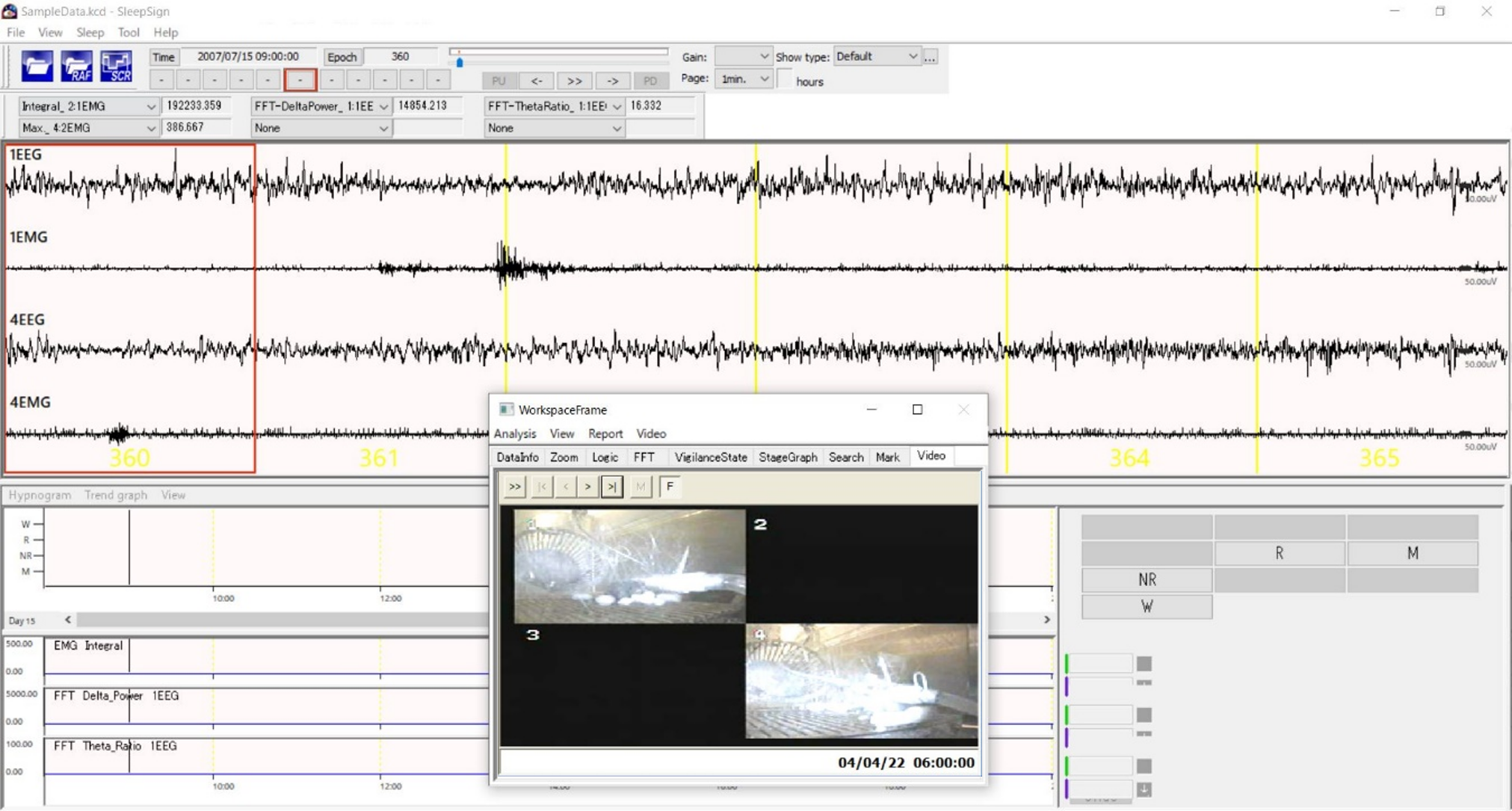Applications
SleepSign for Animal drastically reduces the time and labor you spend on stage scoring with its Auto-Scoring function and many other useful functions to assist your manual scoring. In addition, SleepSign for Animal enables you to generate various types of reports which are required as standard in the basic sleep research field with a few key strokes. These report functions enable you to grasp sleep quality and sleep quantity very easily.
Data Analysis Data Acquisition Video Recording